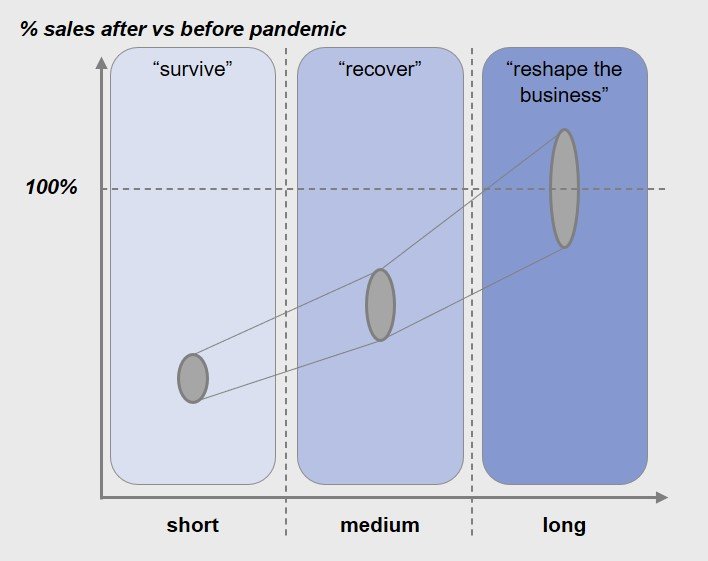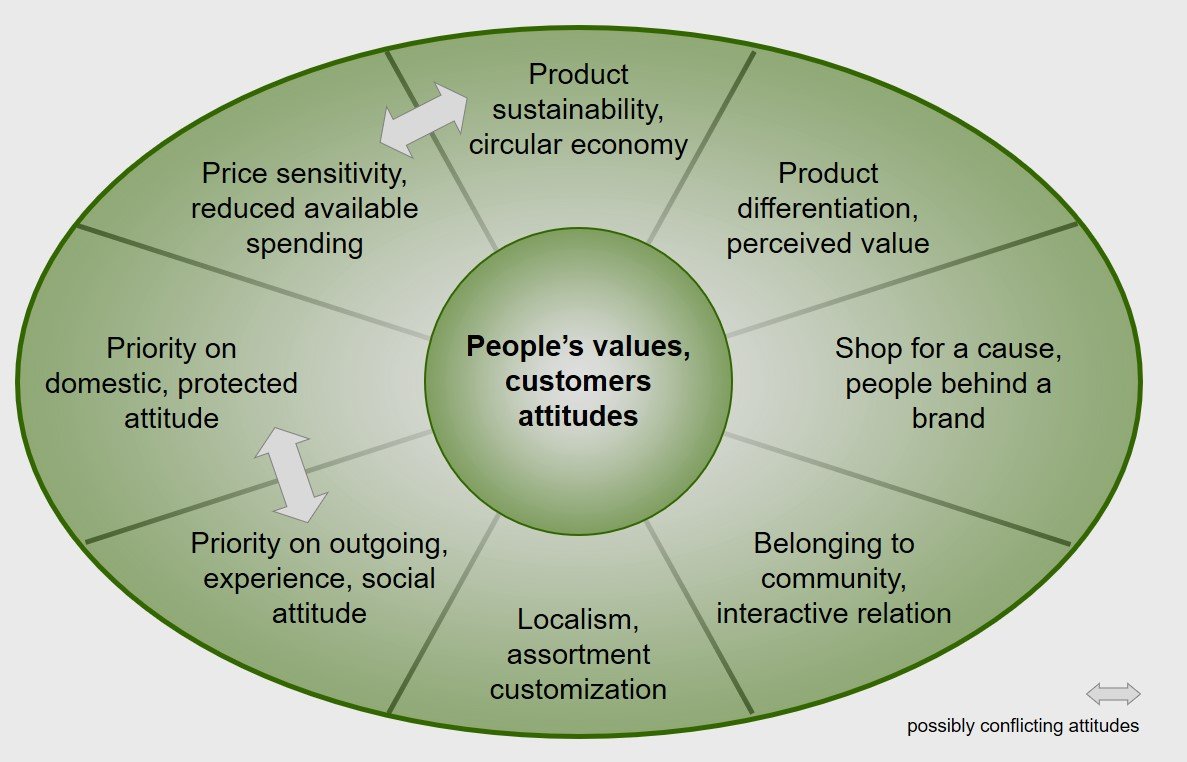As most markets are moving out from lockdown the retail sector is still developing tactical and strategic priorities to drive business for next months and years. The scale of changes that will be required to restart operations and to achieve financial targets is unprecedented. The pandemic has altered customer priorities, expectations, lifestyle, spending patterns and the effects will impact the omnichannel model, the frequency and the location of shopping, the decision process, the influencing factors
Retailers will face 3 stages of evolution
first 2-stage performance will be below the pre-crisis levels posing a financial threat to many players
1. short term - first period after lockdown: survive the financial shock; take immediate actions on collections, shops, cost structure; fine tune store ops to meet safety and customer service standards
2. medium term - flexible management of transitional period: develop trading scenarios, monitor progress and optimize financial impact; enhance the retail experience according to customer behaviour; take in season assortment decisions to reduce risk
3. long term - the raise of a new retail paradigm: absorb new consumer habits; develop product, experience, service differentiators; deliver seamless omnichannel model with stronger community values
Download our white paper on the 3 stages of evolution
Short term - survive the shock
Customer attitude is dominated by extreme prudence and focus on bare essential categories. More engaging retail segments and impulse purchase will therefore be penalized therefore financial results are expected to be far below last year levels. Retailers’ priorities will be to:
. Assess current collections
. Clear old stock effectively to reinvest cash in new collections
. Review buying orders for next seasons
. Re-organize store operations
. Re-organize store network
. Leverage brand community
Medium term - recover balance
Customer attitude will be a balance between the negative economic outlook and the growing desire to shop lifestyle products and personal benefit services. Retailers’ priorities will be to:
. Foster and grow brand community
. Manage sales proactively
. Take quick product decisions
. Extend retail experience options
. Optimize physical store network
. Manage with flexibility omnichannel stock
. Manage trading scenarios
Long term - reshape the business
An increased attention on brands’ ethics, product sustainability, durability and perceived value, links to territory, relevant communication to individuals will drive major changes in retail landscape. Financial results will be back to or above the levels before crisis. The new ‘rule-of-play’ will determine a competitive selection as success factors will be deeply different from before
People’s values, customers attitudes
Key to implement a new retail model is the understanding, the interpretation and the absorption of the huge shifts in people’s values and expectations.
It will be the combination of principles already growing before the pandemic as well as the new lifestyle that will emerge in the next coming months
The scale of changes required for being competitive is unparalleled and demands a synchronized management effort across several disciplines
Retailers should focus on 10 top priorities:
1. Product and store sustainability
2. Assortment differentiation, innovation
3. Collection design new principles
4. Store formats innovation
5. Trading model evolution
6. Faster, more effective supply chain
7. Omnichannel integration
8. Stronger liaison with community
9. Links to territory
10. Brand’s people, passions, values


